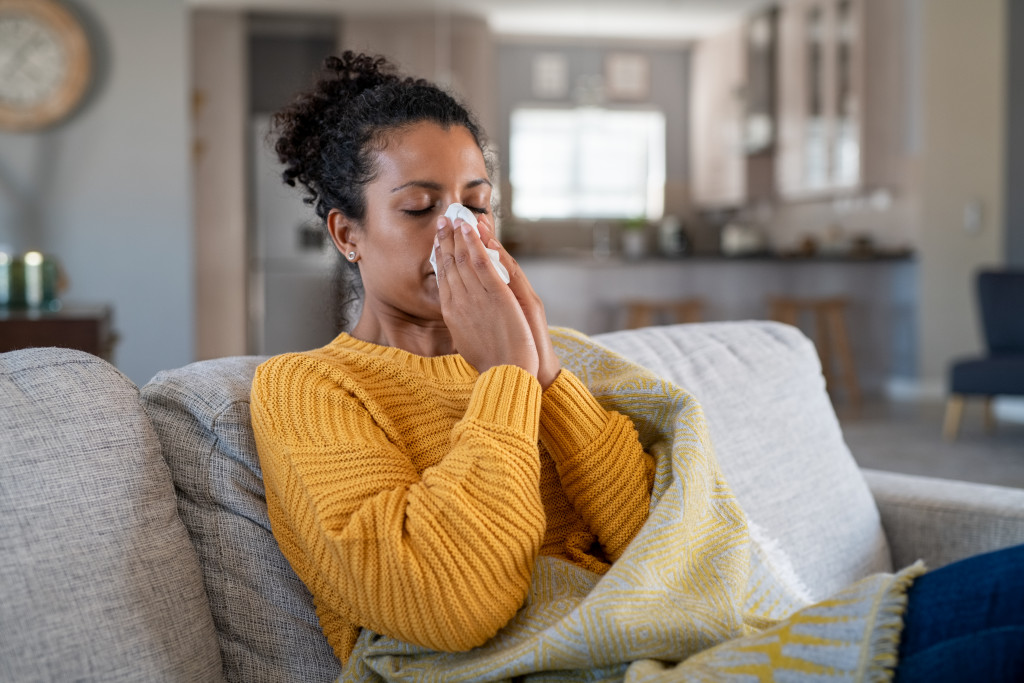- Prevent moisture-related conditions by implementing proper ventilation in your home.
- Effectively manage water flow and address leaks promptly to avoid potential damage.
- Adequately insulate your property to regulate temperature and prevent mold growth.
- Regular maintenance and inspections can help catch and address moisture-related issues before they escalate.
- Ensure you are prepared for possible water damage by considering emergency measures.
Your home should be a safe and comfortable haven, free from moisture-related conditions that can impact your health and the structural integrity of your property. Moisture problems, such as mold growth, dampness, and water damage, can lead to respiratory issues, allergies, and costly repairs. Taking proactive steps to prevent and manage moisture-related conditions is crucial in maintaining a healthy and sustainable living environment. This guide will discuss five tips to help prevent moisture-related conditions at home, ensuring your family’s well-being and property’s longevity.
1. Proper Ventilation
Good ventilation is essential in preventing excessive moisture buildup in your home. Ensure that areas prone to humidity, such as bathrooms, kitchens, and laundry rooms, have adequate ventilation systems. Install exhaust fans or vents to remove excess moisture and prevent condensation.
Regularly clean and maintain these ventilation systems to ensure optimal functioning. Opening windows and doors when weather permits can also promote airflow and help reduce humidity levels. You can minimize moisture-related issues and maintain a healthier indoor environment by implementing proper ventilation measures.
2. Effective Water Management
Proper water management is crucial in preventing moisture-related conditions. This is because even small leaks or water flow issues can lead to significant damage over time.
Here are some tips for effective water management:
Identify and Address Leaks Promptly

Leaks are a common cause of water damage in homes. Even minor leaks can lead to bigger problems if left unaddressed. It is important to regularly inspect your home for any signs of leakage, such as water stains or rust-colored spots on walls or ceilings. Check all faucets, pipes, and appliances that use water, and repair any leaks immediately. This will prevent potential damage to your home and save you money on your water bill.
Direct Water Away from Your Home
Gutters and downspouts are crucial in managing water flow around your home. Ensure they are clear of debris and properly positioned to direct water away from your home’s foundation. Clogged gutters and downspouts can cause water overflowing and seep into the basement or crawl space, leading to moisture-related damage. Regularly cleaning and maintaining these areas can help prevent potential issues.
Grade the Soil Surrounding Your Home
The soil surrounding your home’s foundation should be properly graded to slope away from the house. This will prevent water from accumulating and seeping into the foundation, potentially causing damage. If your property does not have proper grading, consider hiring a professional to regrade the soil. This may require adding or removing soil to create a slope away from the foundation.
Consider Installing a Sump Pump
In particularly wet areas or homes with basements, installing a sump pump can be an effective water management solution. A sump pump is a device that removes excess water from the basement or crawl space, preventing flooding and potential damage. It is important to regularly maintain and test your sump pump to ensure it is working properly in case of heavy rainfall or groundwater seepage.
3. Adequate Insulation
Insulation plays a vital role in regulating temperature and preventing moisture-related issues. Properly insulating your home can help control condensation and reduce the likelihood of mold growth. Insulate walls, floors, and roofs to prevent moisture from entering your home.
Pay special attention to areas such as basements and crawl spaces, as they are more susceptible to dampness. In colder climates, ensure that attic spaces are adequately insulated to prevent ice dams, which can lead to water damage. Installing adequate insulation creates a barrier against moisture infiltration, ensuring a drier and healthier living environment.
4. Regular Maintenance

Regular maintenance is key to preventing and managing moisture-related conditions at home. Conduct routine inspections of your property, both indoors and outdoors, to identify any potential issues. Check for signs of water damage, such as stains, peeling paint, or warped wood, and address them promptly.
Clean and maintain your gutters regularly to prevent clogging and subsequent water overflow. Trim trees and vegetation near your home to prevent excess moisture buildup and reduce the risk of damage from falling branches. By staying vigilant with regular maintenance, you can catch and address moisture-related problems before they escalate.
5. Emergency Preparedness and Quick Response
Sometimes, despite taking preventative measures, emergencies occur. Quick action is crucial to minimizing damage, whether it’s a burst pipe, a flooded basement, or a significant leak. Familiarize yourself with the location of your home’s main water shut-off valve so you can stop the water flow quickly in case of a major leak.
If you experience extensive water damage, don’t hesitate to call professionals who offer 24-hour emergency water restoration services. These experts have the equipment and knowledge to dry out your home quickly, preventing the onset of mold and mildew and saving you from costly repairs in the long run. They will also ensure that your home is thoroughly cleaned and sanitized, restoring it to its pre-damaged state.
In Closing
Preventing and managing moisture-related conditions at home is crucial for your family’s health and the longevity of your property. You can create a drier, healthier, more sustainable living environment by implementing proper ventilation, effective water management, adequate insulation, regular maintenance, and proper drainage systems.
Remember, moisture-related problems can be costly and detrimental to your well-being if left unaddressed, so it is essential to take proactive steps to prevent them. With these tips, you can ensure a safe and comfortable home for you and your loved ones.

